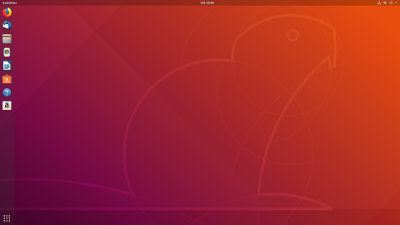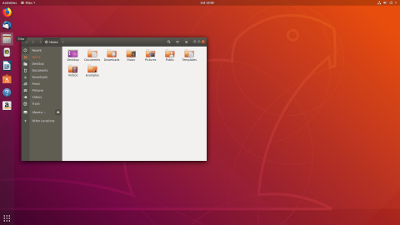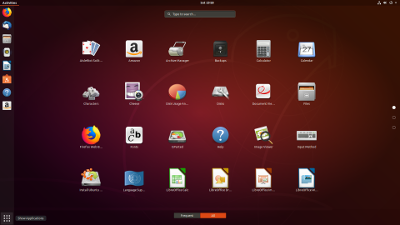Jim's Open Source Software Pages
Free yourself from commercial software
Break free with Ubuntu
The next step in your bid for software freedom is to replace Windows with a free, open source (FOSS) operating system called Linux. I’ve held back using that word until now, because it makes some people nervous, maybe enough to stop reading further. Now that it’s been written, I’ll have more about it on the Linux page.
Below are images of the desktop, the data folders, and the applications selector of Ubuntu, my choice for Linux distribution. It doesn't look at all Like Windows, does it? That's just one of several advantages I'll explain on these pages, after a little background. Before we go on, you can click on the images below for close-ups of the Ubuntu desktop, data file folders, and applications selector.
By some accounts, there are about 300 active Linux distributions, and about as many that have come and gone. Most of them are variations of an original few. Some are specifically targeted to a particular task or a particular user group. That still leaves a lot of choices for general use. After trying several, I chose Ubuntu because it's easy to use, has a simple, straightforward desktop, and because it has a stable future.
South African software developer Mark Shuttleworth, whose interest in Linux began with the Debian Project, left that group to organize Canonical Ltd., with the goal of creating an easy-to-use distribution that would be updated on a regularly scheduled basis, thus assuring users that they have an OS that is moving ever forward. This is an especially important factor in attracting corporate users, who help support Canonical by paying for direct support. Shuttleworth also endowed a foundation to keep Ubuntu going if Canonical's financial support is interrupted.
Canonical has gone on to apply the Ubuntu core to many other technology projects, but remains committed to providing a great PC operating system.
Ubuntu leads the way
Many Linux distributions are based on Ubuntu. Some of these are developed in cooperation with Canonical and are designated as official Ubuntu flavours [British English for flavors]. A list of these can be found here. Some are designed to look similar to Windows, for those who have trouble weaning themselves from the familiar. In fact, one thing that immediately turns some people off when they see Ubuntu it that it looks almost nothing like Windows. I think that's a good thing, because it really is easier to find my way around in Ubuntu than in Windows.
At the other end of the Linux scale are distributions designed to increase the ability to customize the desktop. I don't want to play around with my desktop; I just want to quickly and easily get to the applications and utilities I need to get the job done, so I'm sticking with Ubuntu.
It's easy to get started with Ubuntu. After you've copied all your existing data files to a safe place, you just download the installation file from the Ubuntu Web site and write it to a DVD or USB stick. The installer is simple to run. Once its complete, select the Firefox Web browser from the menu bar and it opens to the Ubuntu Firefox home page, where you'll find a link to excellent documentation for the first-time user.
Please send questions or comments to jim@jimgreene.com
Powered by w3.css


